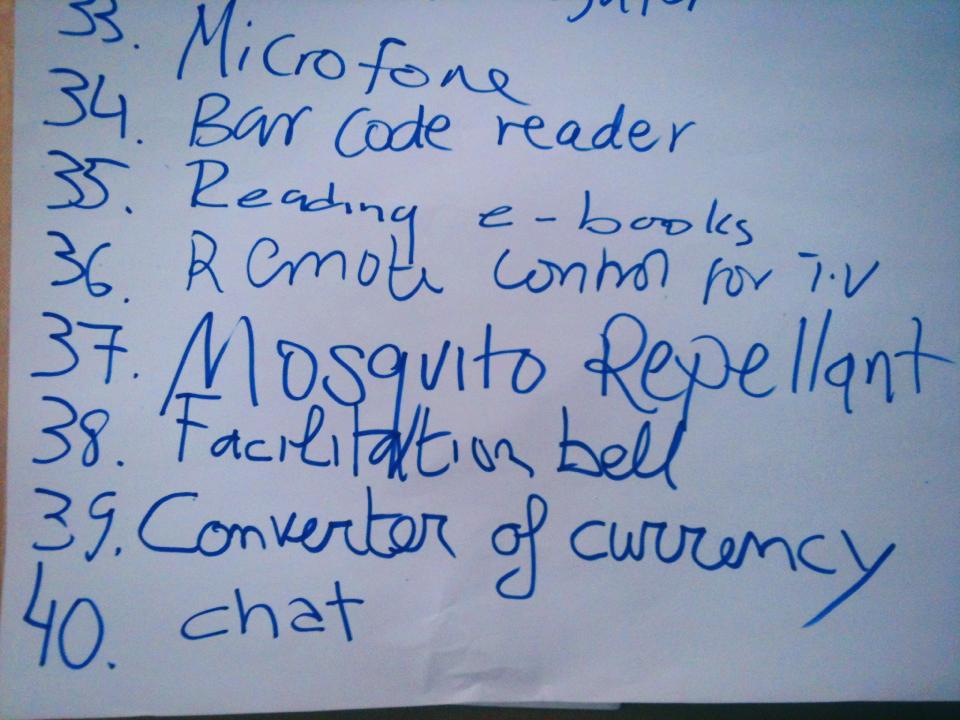Top 100 Lists

Fostering the flow of innovative ideas
Overview
Top 100 lists are an approach for capturing a high level of ideas. They are a simple yet powerful method of clarifying related issues and diving deep into participants’ minds.
How to use it
- Activate past learning and explore participants’ subconscious.
- Break the ice at the start of a learning activity or course.
- Brainstorm with structure.
- Demonstrate creative capacity of the group.
How to apply it
Start:
Identify in advance or democratically with the group which issue you will explore.
Setting:
Set up the room according to the number and types of learners. For example, language barriers can be tackled by having homogenous groups work together, or by creating individual Top 100 lists.
Materials:
- Large wall space, flip chart or paper on which to organize the list.
- Sticky notes and writing materials.
Time/Steps:
- Write the problem at the top of the working space.
- Mark the numbers 1 to 100 on the working space. This will prevent participants from pausing to count throughout the process. This high number is what makes the method effective. It forces a profound level of reflection that reaches all corners of the mind.
- Instruct participants to come up with their ideas as quickly as possible. All ideas should be recorded, even if they seem obscure or irrational.
- Participants can offer ideas one-by-one. These can be written directly on the chart, or on sticky notes which are stuck to the chart in order.
- The first 30 ideas tend to be the obvious ones, as they are easily selected from the recent memory or most-repeated experiences of participants.
- The next 40 ideas will begin to demonstrate patterns and trends. These ideas tend to be the most difficult to generate because they require divergence from the habitual approach.
- The final 30 entries are often the most imaginative and innovative, perhaps even absurd, because by this time the most common options have already been recorded. This is the most profitable phase of the process because shifts in perspective are most likely to occur.
- Debrief: Lead a reflection process once 100 ideas have been produced. This should examine the general trends and patterns, as well as the plausibility of points themselves.
- The information can then be used in a variety of complementary exercises to analyse and use the information produced. One approach is to cluster and then prioritize the points, as after a Brainstorming session.
- Reproduce the list in a reusable format to includein the end-of-activity report and on the course website.
How to adapt it
- Almost any subject can be addressed with a Top 100 List.
- Record the ideas on sticky notes, to make them easier to cluster and reorganize. Record the list in writing or a photo before moving the ideas around.
- Whether you do this on an individual or grouplevel will depend on the objectives.
Case study
Title:
The best toolkit for your own job is the one you produce yourself.
Activity:
Master trainers Aga Khan Academy on Microfinance (ACAM)
Contact:
Robin Poppe, R.Poppe@itcilo.org (Learning and Communication)
Description:
During a three day workshop the participants, together with the facilitators, constructed a list of 52 elements. The topic of the list was ‘the ideal toolbox for a master trainer’. Some of the elements were more conventional but others were also very creative, for example: ‘traditional music.’ The most difficult stage of this methodology was to come up with the first 20 elements. Once they were established, the other elements followed more easily.
Tips
- Be sure to provide enough time to complete the list, because it is only effective when done in one sitting.
- Rid the room of all distractions. This includes turning off mobile devices and finishing any drinks first.
- Repeated ideas may provide clues to the thought processes of participants. Therefore address them only at the end of the session.
- Instruct participants to use acronyms and short forms, and to avoid full sentences as they consume precious time and energy.
Resources
- The method in action: http://itcilo.wordpress.com/2010/09/06/100-facilitation-tips/
- Blog and instructions: http://litemind.com/tackle-any-issue-with-a-list-of-100/





